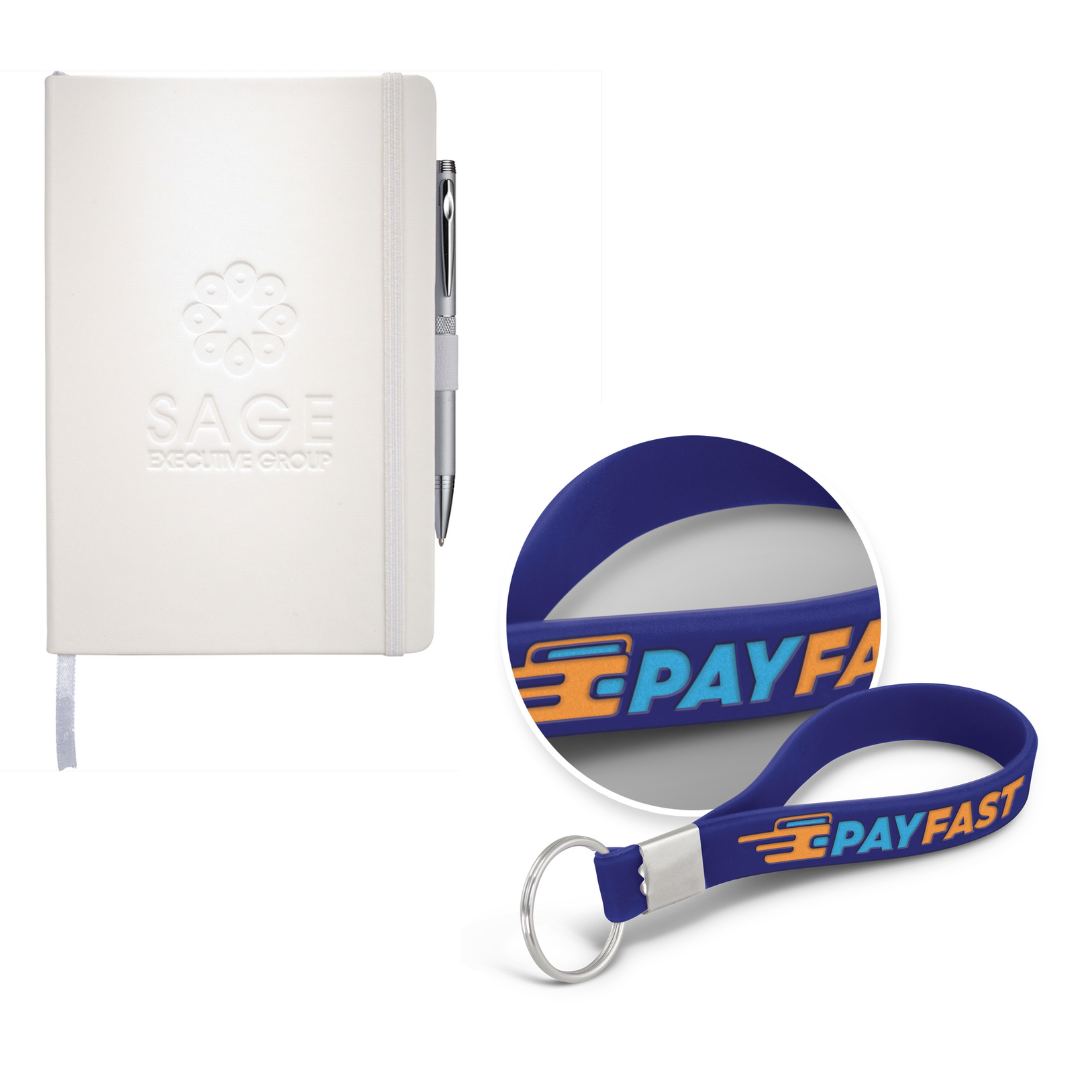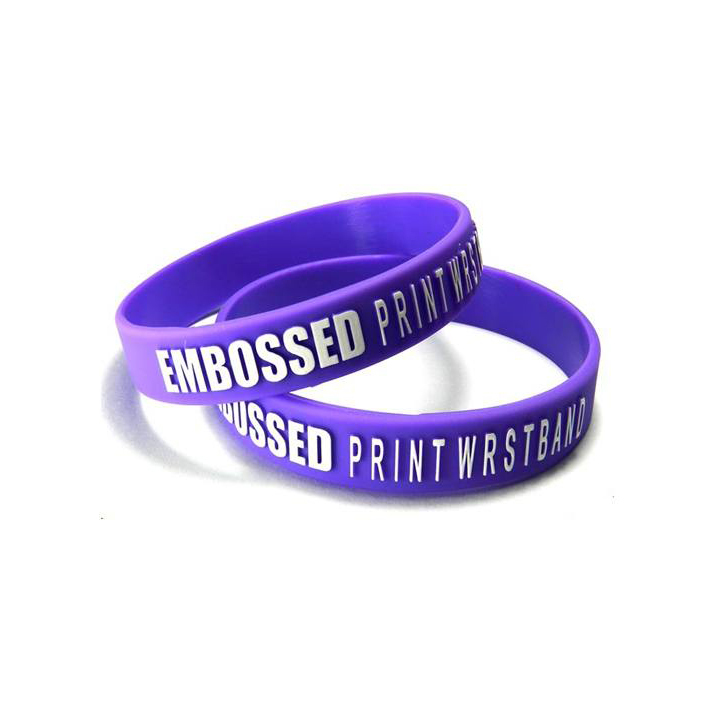Embossing
Embossing is a printing technique that creates a raised relief design or pattern on a material such as paper, cardstock, silicon or leather. It is achieved by pressing the material between two dies, one with the raised design and the other with a corresponding recessed design (known as debossing). Embossing adds a tactile and visually appealing element to printed materials, giving them a three-dimensional effect. It is often used in packaging, stationery, and promotional products to create a premium and memorable look. It is a popular method for notebooks, compendiums and silicon wristbands.
The advantages and limitations and very similar to debossing


